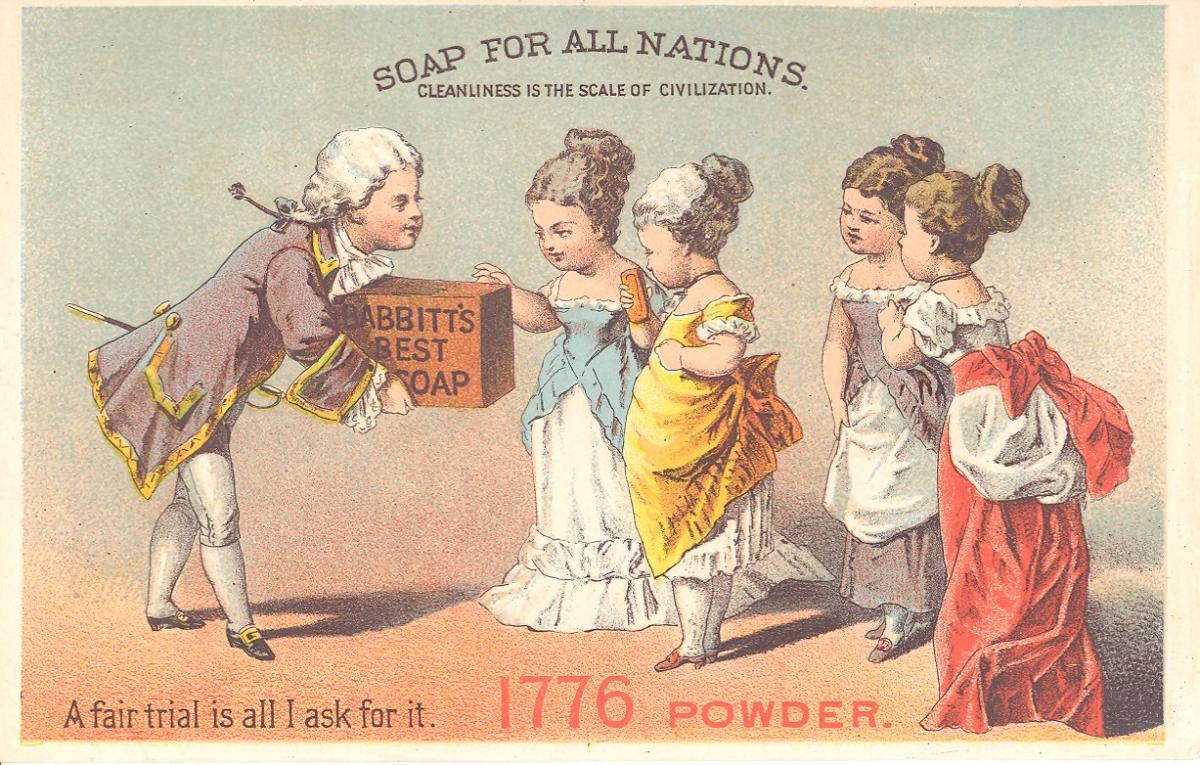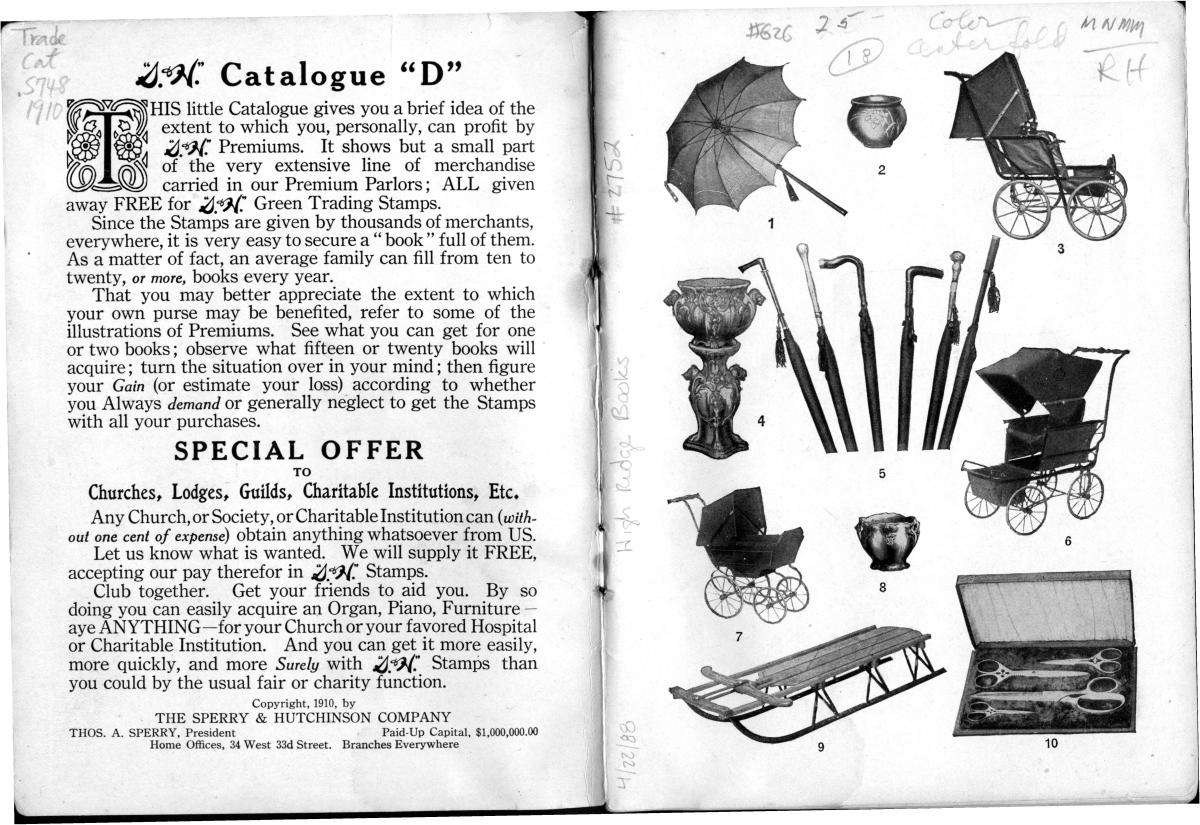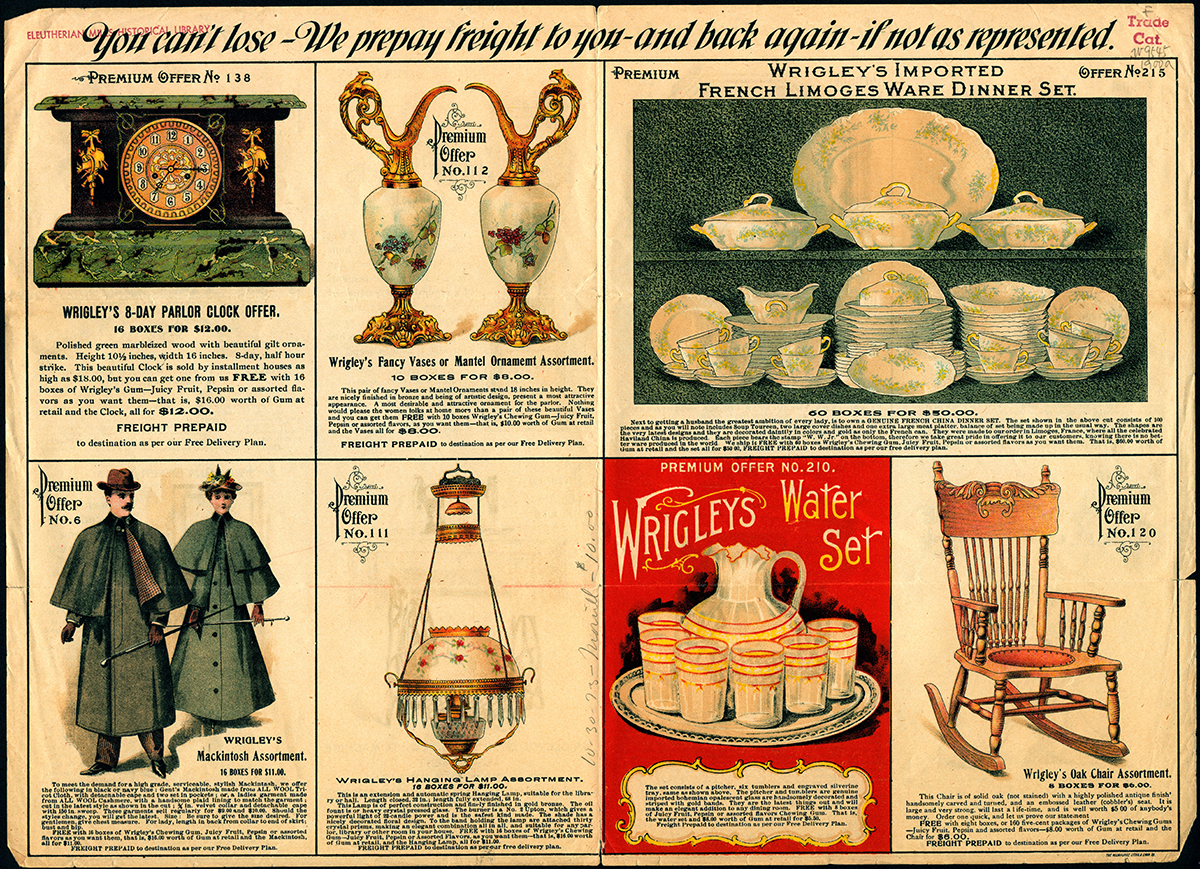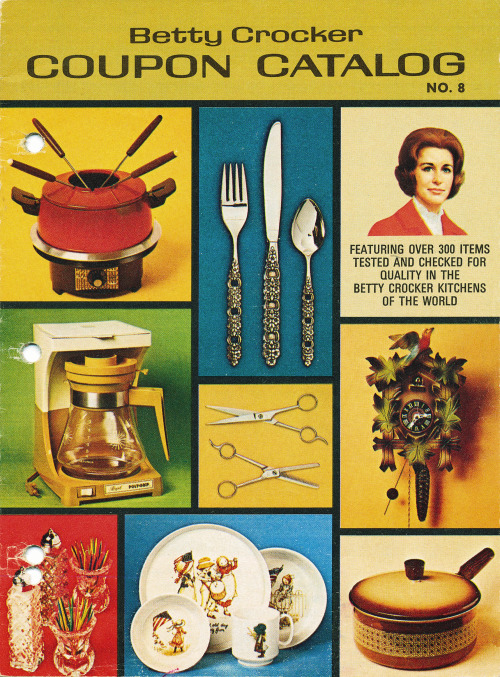Did you ever save your bubble gum wrappers or cereal box tops to send away for a special toy? Or paste stamps into an album to exchange for a unique item for your home? If so, you probably had a loyalty to a certain brand or store so that you could collect enough premiums to place an order.

Bazooka free gift book. [Topps Chewing Gum, Inc.], ca. 1955.
Premiums are promotional items, like toys, collectibles, souvenirs or household products that are linked to a product or specific retail outlets. They may require sending in collected box tops, tokens or proofs of purchase to acquire an item for free (though you probably have to pay for shipping and handling.)
A successful premium campaign can be beneficial to a company because it may help to establish lasting relationships with consumers.
One of the earliest examples of the use of premiums in product promotion came from B.T. Babbitt, who owned a soap company that manufactured Sweet Home Laundry Soap. In 1851, he became the first person to manufacture and market soap in individual bars. Up until that time, soap was sold in large raw cakes from merchants, and it was hard to convince customers of an advantage to individual bars.
Babbitt decided to offer color lithographs to anyone who sent in 25 soap wrappers. The promotion was a huge success. Customers bought multiple bars of Sweet Home Laundry Soap at a time, and collected enough wrappers to obtain a full series of the colorful flower lithographs. Editions of some of the pictures ran into the hundreds of thousands. There was hardly an American home without them at the time.

Advertising card for soap by B.T. Babbitt of New York, New York ca. 1907. (Fingerman ephemera collection). Click here for a link to a catalog of Babbitt’s premiums.
The Sperry and Hutchinson Company, started in 1896 in Jackson, Michigan, was the first third-party provider of trading stamps for various companies. The retail organizations that distributed the stamps (dry goods dealers, gas stations and later supermarkets) bought the stamps from S&H and gave them as bonuses to shoppers based on the dollar amount of a purchase. S&H Green Stamps opened its first redemption center in 1897. Customers could take their filled booklets of "green stamps" and redeem them for household products, kitchen items, and personal items.
During the 1960's, the company promoted its rewards catalog as being the largest publication in the United States and boasted that it issued three times as many stamps as the U.S. Postal Service.
A series of recessions during the 1970's decreased sales of green stamps, but the bottom fell out of the trading stamp business when supermarkets stopped issuing stamps. Trading stamps have been replaced in supermarkets by loyalty cards which offer savings and convenience through coupon-free discounts instead of premiums.


S. & H. Green Stamp Premiums. Sperry and Hutchinson Company, ca. 1910.
In 1891, at the age of 29, William Wrigley Jr. left Philadelphia and moved to Chicago to establish a western agency for his father’s soap business. He started out selling his father’s scouring soap, then switched to baking powder. William had the idea of offering two free packages of chewing gum with each can of baking powder. The premium, chewing gum, proved to be more popular than the baking powder! Wrigley’s Spearmint and Juicy Fruit made their debut in 1893.
In the late 1890's Wrigley faced heavy competition for sales. Wrigley decided to start offering premiums to dealers, such as coffee grinders, cash registers, scales, and even Wrigley display cases. He expanded his premium offers to customers, giving away items ranging from lamps and razors to cookbooks and fishing tackle. The premium system worked so well that Wrigley even published premium catalogs to help customers choose what they wanted.

Wm. Wrigley Jr. & Co. [Premium offers] [ca. 1900].
Kellogg's Corn Flakes had the first cereal premium in 1909, with “The Funny Jungleland Moving-Pictures” book. The book was originally available as a prize, given to the customer in-store with the purchase of two packages of cereal. In 1909, Kellogg’s changed the book giveaway to a premium mail-in offer for the cost of a dime. Over 2.5 million copies of the book were distributed in different editions over a period of 23 years.

Betty Crocker products had one of the best-known premium programs when the company started inserting coupons in bags of flour in 1929. Consumers could collect and use these to purchase Oneida flatware at a reduced price. Beginning in 1937, coupons were printed on the outside of the box with point values and could be redeemed through the Betty Crocker Catalog in exchange for cookbooks, kitchenware, and home accessories at a discount. In December 2006, after 75 years, General Mills retired the Betty Crocker Catalog. Their current premium program is called "Box Tops for Education," where consumers can save the symbols that are printed on General Mills products to help schools pay for educational supplies.
As their website says, “CLIPPING IS EASY!” So if you feel inspired, you can check to see if you have any products with Box Tops in your home right now, and “Clip Box Tops from your favorite products and turn them in to your child’s school today!”

Linda Gross is a reference librarian at Hagley Museum and Library.
